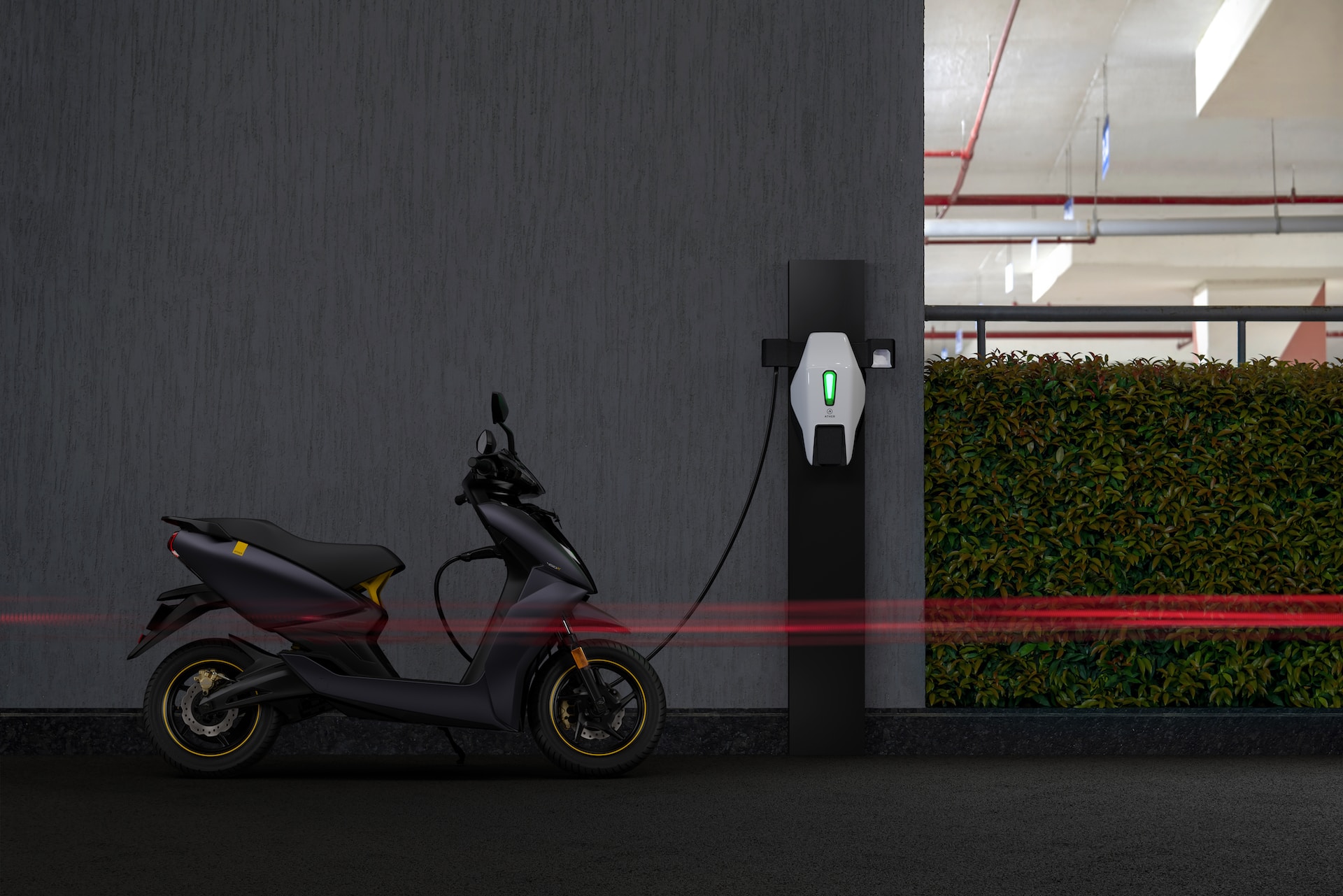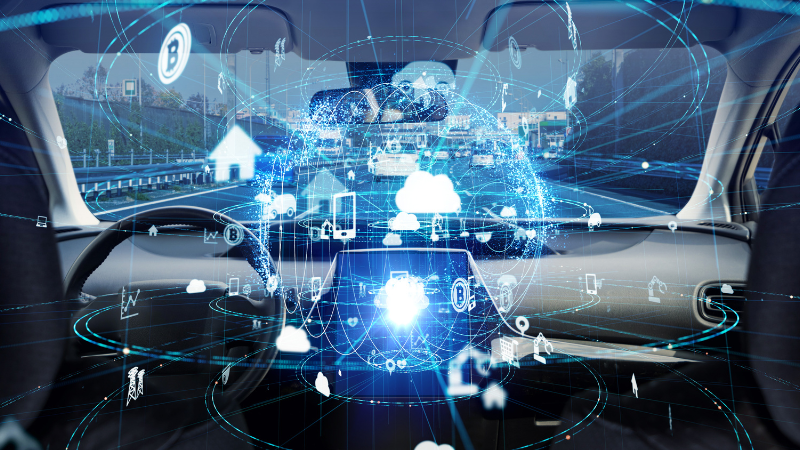As the world shifts toward sustainable transportation options, the e-mobility environment has gained significant traction. Offering zero-emission capabilities and improved driving ranges, EVs are becoming increasingly popular amongst consumers and business leaders alike. However, a robust EV charging network is required to support the widespread adoption that is anticipated to be necessary to meet emissions targets.
In this guide to the future of charging infrastructure for e-mobility, we’ll delve into the exciting developments just on the horizon. From wireless charging stations to clean energy charging, the future for the sector is bright. Our article will also explore the current state of the EV charging network and discuss how it’s expanding.
The Current State of Charging Infrastructure for E-Mobility
E-mobility is certainly picking up speed, but the current EV charging network varies significantly from country to country and region to region.
We’ve seen a rapid expansion in major population centres within the United Kingdom and the USA. However, nations such as India currently lack the charging infrastructure necessary to meet their government’s proposed target of 30% EV adoption by 2030. Only 1,400 EV charging stations are currently available in the country, with most located in cities such as Mumbai and Delhi.
Despite the inconsistency of available charging points, the popularity of EVs has skyrocketed across the globe over the last few years. In 2022, 14% of all new vehicles sold were EVs, and the first quarter of 2023 saw 2.3 million electric vehicles sold—25% more than the first quarter of 2022. Moreover, as the International Energy Agency highlights in its Global EV Outlook, there has been a 35% increase in year-on-year sales—with more affordable models coming to the market each month.
At the same time, analysts have noted that the EV charging network must evolve and scale up to meet this increase in demand for e-mobility solutions. A lack of charging infrastructure often drives public reticence towards EVs. As Ernst & Young’s report on European EV charging highlights, the number of public charging points (PCPs) is set to fall behind the levels necessary to support EV growth unless investment is made to ensure greater access to the EV charging network.
The current state of the public demand for an available EV charging network across Europe, for instance, has seen the number of publicly-available charging points grow to 574,000 across the continent in 2023. Despite this, the European Federation for Transport and Environment has highlighted in their research that to meet demand, 1.3 million PCPs will be required by 2025, and a total of 3 million are likely to be necessary by 2030.
Alongside this, each country often has different charging standards and plug types, even amongst the collaborative nations of the European Union—from the CHAdeMO-style plug to the Combined Charging System (CCS), as well as Tesla’s proprietary Supercharger network—which means that planners and legislators that are looking to ensure that not only consumers, but business leaders within the logistics industry, can move towards EV solutions for their fleets.
Efforts are being made to harmonise charging standards and promote interoperability moving forward, but more must still be done to make certain that travellers and workers moving between nations can continue to power up their EVs.
If you’d like to learn about the technologies driving e-mobility and transportation solutions, see our recent article comparing the efficiency of batteries versus fuel cells to understand which form of propulsion comes out on top.
What Does the Future Hold for E-Mobility Charging?
So, what is on the cards for future developments within the field of e-mobility charging infrastructure? Interestingly, many of the emerging technologies we discuss in this list—which are either being rolled out to the public at present or likely to enter public use over the next decade—are moving away from how we’ve traditionally thought about fuelling up our personal vehicles.
As a result of leaps forward in renewable energy and battery technologies, many vehicle manufacturers no longer want to be constrained by ways of working common to cars and trucks with internal combustion engines. Instead, as we’ll see in this list of changes coming to the EV charging network, experts across the industry are aiming to make EVs more accessible and user-friendly.
1. Wireless Charging Stations
The potential of wireless charging continues to evolve. For example, instead of requiring users to plug in a cable—whether at home or in the car park whilst doing the weekly shop—vehicles will be able to refuel wirelessly by parking over pads embedded within the ground, simplifying the charging process.
This will be useful for those who want to purchase an EV but would need help to keep their vehicles powered up due to living in apartments with shared parking spaces.
Whilst tests of these technologies have failed to meet the levels of efficiency that e-mobility manufacturers demand, recent reports have shown that South Korea’s Hyundai have devised wireless charging stations that simultaneously offer speedy charging and low-cost installation.
Whilst the technology is still some way off, wireless charging stations are only the start. The possible evolutions of a wireless EV charging network are fascinating, with forward-thinking manufacturers suggesting the development of dynamic charging systems that allow EVs to charge whilst in motion through pads embedded in the surface of roads, enabling the expansion of charging infrastructure into suburban and rural areas.
2. Clean Energy Charging
As governments aim to reduce their carbon footprint, the EV charging network will increasingly rely on clean energy sources to power e-mobility solutions.
Clean energy charging technologies are currently available that couple charging stations with solar panels and wind turbines, helping reduce grid demand and ensure that renewables power these zero-emission vehicles.
However, given the current cost of solar photovoltaic panels—even if cheaper than a few years ago—means that this clean energy charging technology is still out of reach for many when it comes to home charging. Nevertheless, new developments such as SolarBotanic’s Tree are promising reasonable prices that allow consumers to be certain that fossil fuel-powered PCPs are no longer charging their vehicles.
3. Intelligent Charging Systems
With the introduction of intelligent charging systems, consumers will quickly find that keeping their vehicles fuelled up will be tailored to their individual needs. In addition, advances in artificial intelligence and the Internet of Things (IoT) will enable PCPs to be equipped with analytics capabilities, optimising charging based on grid load and maximising the efficiency and reliability of the EV charging network.
Alongside this, evolutions in batteries and ultra-fast clean energy charging technologies will enable road users to get on the move rapidly, whilst algorithms will analyse driver habits, travel patterns, and energy grid conditions to determine the most cost-effective charging strategies for specific users, helping to ensure that even the most financially-conscious EV owner can use their vehicle to its fullest.
At the same time, web connectivity and cellular IoT will allow specific stations within the EV charging network to report their status to a central location, allowing engineers to conduct preventative maintenance and ensure maximum up-time on each PCP.
4. Vehicle-to-Grid Integration
Through integration with smart homes and energy storage solutions, EVs will be able to sustainably deliver excess energy back into the grid. Vehicle-to-Grid—or V2G—technologies have been proposed since the 1990s, but it has taken the massive upswell in e-mobility popularity over the last five years to bring the conversation back around to the possibility that V2G is viable.
The technology behind bi-directional V2G is complex but, in essence, involves discharging an EV’s battery when connected to the grid. Owners would consent to this energy transfer and, in all likelihood, would earn revenue or receive financial incentives for supplying this power. With the incorporation of the intelligent charging systems mentioned above, the charging and discharging rates could be balanced to ensure battery performance and longevity.
Whilst consumers might only see a small amount of revenue in a single or double-vehicle household, business leaders with large numbers of EVs could benefit significantly from helping to ease peak demand, making the prospect of replacing an entire fleet of ICE vehicles with an e-mobility solution much easier to tolerate.
5. Battery-Swapping Technology
Whilst the popularity of e-mobility is growing within the consumer environment, business leaders are still hesitant to embrace the technology, particularly given the lack of a developed charging infrastructure and harmonisation between nations, which large logistics providers must contend with when planning international routes. Battery-swapping technology presents a potential solution to this issue.
This technology would enable EV owners to swap their depleted batteries with fully-charged ones at specialised stations, significantly reducing the time spent off the road and addressing the concerns of executives and drivers within the logistics and shipping sectors.
Advances in automation mean that drivers wouldn’t need to do this potentially dangerous or dirty task themselves—instead, robotic devices would remove the old battery and switch it with one previously powered up via intelligent charging systems whilst in storage. This would bring the time of recharging an EV to something resembling how quickly one can refuel an ICE vehicle.
Of course, one roadblock in the way of widespread adoption is that automotive manufacturers have no standardisation of battery technology, size, and features. Again, harmonisation needs to occur for this technology to become economically viable, but as we can see, it presents an excellent opportunity to give business leaders a reason to switch out their ICE taxis and trucks for fleets of zero-emission EVs.
Predicting timelines within the automotive sector can be challenging, often depending on several factors, including economic conditions, market demand, manufacturer collaboration, policy support, and infrastructure investment. Despite this, many of the emerging technologies on this list are already possible or are even being tested on a smaller scale.
Within five to ten years, we’ll likely see the widespread roll-out of ultra-fast intelligent charging systems and wireless charging stations. However, vehicle-to-grid integration and battery-swapping technology is still some way off, requiring the cooperation of different organisations within the public and private sector. Experts predict that V2G will be viable within ten to fifteen years, but it will necessitate manufacturers to work in close collaboration with civil engineers to ensure we fully maximise the potential of EVs.
How the EV Charging Network Is Expanding
The e-mobility charging network is growing globally, particularly as governments across the world introduce deadlines for ending the sales of new ICE vehicles and stricter emissions targets aimed at accelerating the adoption of EVs.
Several key trends highlight this positive growth, including:
Government initiatives. Infrastructure investment, grants, tax exemptions such as the UK’s Plug-in Grant, and additional regulatory frameworks are helping to encourage consumers and business leaders to shift towards EVs.
Private investment. EV charging network operators and utility providers are investing in the development and expansion of e-mobility charging infrastructure, with organisations such as Europe’s Ionity and Electrify America deploying charging stations according to public demand.
Cooperation between automakers and charging network operators. The level of cooperation between vehicle producers and PCP manufacturers is helping to accelerate the expansion of the EV charging network, allowing for collaboration and the sharing of expertise between organisations and the development of interoperable networks that provide a seamless charging and payment experience for customers.
International and federal collaboration. The creation of the Ionity Consortium in Europe and the Electric Highway Coalition in the USA has shown that there is a consensus on the harmonisation of e-mobility and charging standards between nations, helping to ensure fast charging along major routes such as the European International E-road Network and the USA’s International Highway System.
Government initiatives such as the Biden administration’s allocation of $2.5bn in grants to empower the creation of EV charging stations in underserved locations across the USA shows that we’re taking steps in the right direction.
It’s clear that the will to improve charging infrastructure and enhance their accessibility is alive and well within both the private and public sectors. Still, we’re likely to be a few years away from implementing some of these emerging technologies in a commercially-viable manner.
E-Mobility and Transportation Recruitment Experts
At Amoria Bond, our consultants are dedicated to progressing lives everywhere by helping market-leading organisations source the talent they need to succeed. We’re experts in recruiting for the e-mobility and transportation sectors, and our track record has seen us place candidates in 42 nations across the globe—meaning that no matter the location, we can quickly screen and place the professionals that will ensure your profitability and efficiency. Get in touch today to discuss your staffing requirements.






